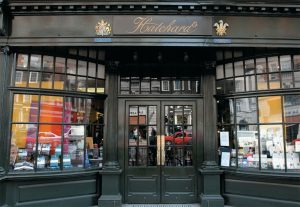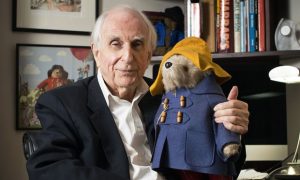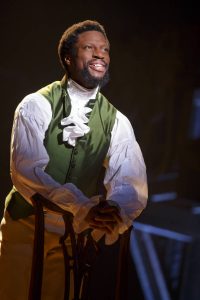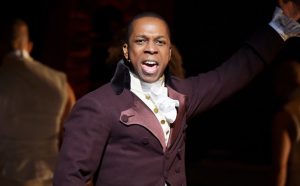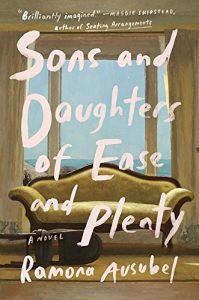Louise Penny again
It seems everyone loves Louise Penny’s series of mystery novels set in the fictional town of Three Pines, Canada. I’ve been a fan since her first, Still Life, and have happily spent many lovely reading hours with the entire series. I also push recommend her novels to anyone unenlightened who hasn’t read Louise Penny.
Glass Houses, her newest in the series will be released August 29th. So dear readers, once again, mark you calendars to call in sick to work, cancel those appointments, and get thee to your local independent bookstore first thing.
I will be reviewing Glass Houses here very soon, thanks to a digital advanced readers copy from the publishers.
In the meantime, here’s a recent CBS Sunday Morning interview with Louise Penny (hmmm the “Penny Posse”, I don’t think so…)
http://www.cbsnews.com/videos/the-world-of-mystery-author-louise-penny/
The Jane Austen Project by Kathleen A. Flynn
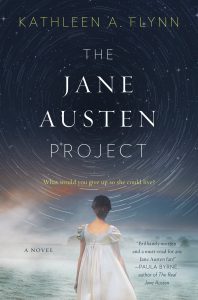 After my last slow, careful reading of Crossriggs, I wanted my next book to be an easier read. But my mind was reluctant to leave the 19th Century. Then, lo and behold, my requested copy of The Jane Austen Project came through from the library.
After my last slow, careful reading of Crossriggs, I wanted my next book to be an easier read. But my mind was reluctant to leave the 19th Century. Then, lo and behold, my requested copy of The Jane Austen Project came through from the library.
I dashed over to my branch, and read the back cover blurb as I walked home — (What do you say, you don’t read and walk? It can be done, albeit carefully in a city) — A Jane Austen time travel piece? Why yes — yes please. Book Barmy readers know I’m a sucker for time travel books.
Dr. Rachel Katzman and Liam Finucaneis come from a technically advanced future where food is 3-D generated, there’s been an ecological die off, and time travel has become successful. As part of a scientifically sanctioned journey, Rachel and Liam are selected and rigorously trained to travel back to 1815. Their assignment is to meet and befriend Jane Austen in order to bring back a trove of lost letters, as well as an unpublished manuscript.
The book opens with our couple waking up from their time travel in a damp Surrey field in 1815, and in forthcoming pages we quickly learn the backstory and the premise of their time travel assignment.
In order to meet Jane Austen, their first task is to integrate themselves with Henry Austen, her favorite brother. They pose as brother and sister, William and Mary Ravenswood from Jamaica looking for investments with Henry who owns several banks in 1815 London. They find a flat in London, purchase clothing, hire servants and begin their adventure.
There much to enjoy in discovering The Jane Austen Project first hand, so I won’t tell you much more about the plot — at the risk of ruining it for you. But I will tell you that Ms. Flynn, an Austen scholar, has created a most realistic time of Jane Austen.
Her descriptions are stellar, giving the reader a true feel of the London streets, the stark contrast of poverty versus the gentility, the food, the servants, the country estates, and the clothing — turns out, 19th century men were the true fashionistas.
I sighed in envy over a scene where William and Mary (Liam and Rachel) go book shopping for Jane Austen’s contemporaries at none-other than, London’s Hatchard’s Bookstore which is still in operation today, just as it has been since 1797.
The Jane Austen Project shines with vivid authenticity, the author weaves in colorful details of the Austens’ lives — how they looked, their family dynamics, their travels, and the state of their health. Ms. Flynn also nails the time period details — manners, morals, habits, and gender roles. Mary (Rachel) is a doctor, but can not publicly use her skills when first Henry, and then Jane, falls ill. She must have William (Liam) pose as a doctor and she advises him from behind the scenes.
The usual time travel rules (yes, there are time travel rules don’t ya know) insist travelers do not impact history. But, right or wrong, Ms. Flynn allows her time travelers to be human, interact with the people of the time and indeed effect small changes. When Mary (Rachel) observes her first chimney boy crawling up her chimney to clean it, she is horrified and pays his boss to release the alarmingly young boy to her custody. Then there’s the scene where Fanny (yes that Fanny) is choking and Mary (Dr. Rachel) automatically uses the Heimlich maneuver, unheard at that time. When Henry Austen proposes marriage to Mary, she must put him off for as long as it takes to complete their assignment. Also, there are changes (obviously fictional) to Jane Austen’s later novels, but I’ll let you discover those imaginative bits for yourself
For me, the pure joy of The Jane Austen Project were the scenes with Jane Austen, Henry, her sister Cassandra, and the various friends and family who are (or will become) characters in her novels. If you’re like me, you’ll hold your breath when our intrepid travelers finally get to meet and share tea with Jane.
Jane, herself, is depicted with a quick intelligence, quiet intensity, and a keen ability to read others. And in 1815, she has already published some of her works. Just imagine being a fly on the wall during this scene where Mary (Rachel) and Jane Austen discuss Pride and Prejudice:
She (Jane) laughed. “Life is full of such oddities is it not? How did Mr. Darcy happen to fall in love with Elizabeth Bennet, when he could have had any lady in the kingdom?”
“Because you made her so lovable?”
“Oh, yes, perhaps that was why.”
While the premise of The Jane Austen Project may seem preposterous (and perhaps it is), this is a fascinating re-creation — an escape into the world of Jane Austen — and I loved every moment of my imaginary and wonderful journey.
Crossriggs by Jan & Mary Findlater
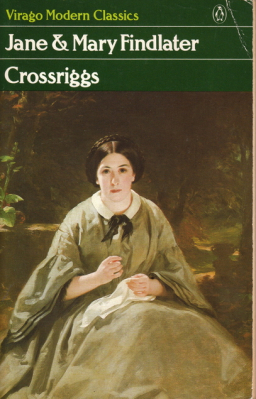 I often roam my favorite book blogs to see what others are reading and recommending. (Just what I need, more to read, but nonetheless, I roam away.)
I often roam my favorite book blogs to see what others are reading and recommending. (Just what I need, more to read, but nonetheless, I roam away.)
Both Eden Rock and Heavenali praised a somewhat obscure Scottish novel called Crossriggs.
My library didn’t have a copy, so I turned to our inter library system. My little book had to travel almost 700 miles from the library at University of California, Long Beach — which cost me nothing. (Most every library has an inter-library loan arrangement for its patrons, and may I just say bravo to our public libraries throughout the country, both big and small.) The loan did come with some stringent rules — I could only renew it once, and late fees racked up at $1 per day. So with that pressure, and after taking a moment to admire the beautiful illustration on the cover –“Lady in Grey” by Daniel MacNee, I opened this book and fell in.
The novel opens with introductions to the principal characters in the small Scottish village of Crossriggs, then the first chapter enticingly sets up the plot:
These, then, were the principal characters in our little world of Crossriggs – a world that jogged along very quietly as a rule, and where “nothing ever happened”, as the children say. Then quite suddenly, two things happened. Matilda Chalmers husband died in Canada, and we hear that she was coming home with all her children to live at Orchard House. That was the first event. The next was that the Admiral’s good-for-nothing son died abroad, and young Van Cassilis, his grandson and heir, came to Foxe Hall. Then and there happenings began.
Crossriggs was written in 1908 by by two sisters who together produced novels, poetry, short stories and non-fiction. At the beginning of their writing career, the sisters were so impoverished, their first works were scribbled and submitted on discarded sheets of grocer’s paper.
This is an old fashioned read, reminiscent of Jane Austen but without all the characters. (I always have trouble keeping Austen’s multitude of characters straight*.) Because Crossriggs takes place in a small village, the characters are limited in number and more manageable for the reader.
Alexandra Hope, our main character, practically sparkles off the pages — full of happiness, love and with ambitions and ideas passed down from her vegetarian, head-in-the-clouds, idealist father…called Old Hopeful. Alex is described as rather plain, but brimming with dreams, imagination and mostly energy. A male admirer in the village describes her best:
“‘Alex,’ he said, ‘you have a genius for living! You just know how to do it . . . You’re alive, and most of us, with our prudence and foresight and realisation of our duties, are as dead as stones!’”
When Alex’s widowed sister Matilda comes home with her five children, the household is not only strained for space, but also for money. Alex adores her sister and children, and happily takes on running the now overflowing household and more than her fair share of caring for Matilda’s children. Alex acquires two jobs to bring in the necessary funds to feed and care the now expanded family. Unlike Alex, Matilda is beautiful but meek, lacking the bravery of her sister. She seemed to be always sewing something (thus the beautiful cover).
Their increased family size and the strain upon the household finances does not trouble Alex’s father , Old Hopeful — he leaves the worrying to Alex:
The ordinary limitations of poverty were nothing to a man of Old Hopeful’s temperament; “A handful with quietness! A dinner of herbs where love is! Who would want more? …What I spent I had: what I save I lost: What I gave I have.”
Old Hopeful is a loving father, and while Alex finds him frustrating, her love for him shines through:
Futile, Quixotic, absurd and unsuccessful, as she knew her father to be, she recognized that he had the right of the argument of life.
The reader can sense the authors took great pains to get everything just right – the characters, the village settings, the weather, the change of seasons — all lovingly crafted. Many of the observations are pure delight:
But the house that had once been the Manse remained much the same always — no bow-windows or iron railings there. A tall man (and the Maitlands were all tall men) had to stoop his head to enter the low doorway – an open door it had always been to rich and poor alike. The square hall was half-dark and paved with black and white flags; the sitting rooms, low-roofed and sunny, wore always the same air of happy frugality with their sun burnt hangings and simple, straight-legged furniture. There was no attempt at decoration for decoration’s sake, only an effect which was the outcome of austere refinement in the midst of plenty.
And this description of the beloved Miss Bessie’s eccentric wardrobe:
Miss Bessie’s taste was not coherent, and as time went on, this want of sequence increased. It seemed as if she could not adhere to a scheme even in braid and buttons, for her bodice would be trimmed with one kind of lace, and her wrists (those bony wrists with their plaintive jingle of bangles) with cascades of another pattern. In her headgear especially she was addicted to a little of everything – a bow of velvet, a silk ribbon, an ostrich tip, a buckle, a wing from some other fowl, and always, always, a glitter of beads.
Crossriggs is definitely a period piece and, like Trollope or Dickens, ones reading must slow to a careful pace. The sisters Findlater are excessive in their use of quotation marks. This can get confusing, as not only are conversations in quotes, but the characters thoughts are also in quotes. I found myself thinking “wait a minute did she actually say that?” “Oh no, she was just thinking it…” See how I use the quotations – confusing. Also, there’s a great many exclamation points, which again, is part and parcel of the period.
But this slow reading pace will reward the reader with some priceless observations and tidbits.
…the faint jangle of the door-bell (the Hopes’ door-bell sounded as if it had lost its voice from talking too much).
and this
“Things are so different when looked at from the outside! Of course they are, that is whey we make most of our mistakes in life.”
For me, the best part of Crossriggs was Alex, I really liked her spirit and found myself cheering her at every insurmountable turn. Towards the end, a great trip is planned…and Alex remains Alex as with this rebuttal about needing a new dress:
“Pooh!, Alex cried. Clothes! Why Matilda, there’s the world – the great round, interesting world to see!”
And who could not relate to her ability to escape into books:
…Alex sat by the fire, snatching half an hour of reading before the children all came tumbling in again. Her thoughts were very far away, for she had the happy power of forgetting the outer world altogether when she read anything that interested her.
The plot takes some twists – some expected and unexpected (there’s an accidental death that shook me for hours), but it’s the village life, the characters and the observations that truly shine in this book.
Crossriggs may not be for everyone, but I adored it. It’s a slow, quiet read and spurred by my inter-library loan deadline, I stuck with it and am very happy to have made the effort. It was sad to send this copy of Crossriggs back home to Long Beach. I’m going to find my own copy to add to my library.
*I have a little book called Who’s Who in Jane Austen and the Brontes. I also have one for Dickens. Immensely helpful for all three authors.
Paddington Bear
I found out from Reading Matters (a great book blog), that Vale Michael Bond, the author and creator of Paddington Bear has died at 91.
I didn’t discover the Paddington Bear books until later in life, well after childhood, but fell hard for the cute little guy who embodies all things British. From being found at Paddington Station, to his love for marmalade, to his ever-present good manners.
Not one for stuffed animals, I do have to confess I own two Paddington Bears, both gifts from Husband – one with proper yellow galoshes and a small guy with cute red ones. Both with luggage tags saying “Please Look After This Bear.”
For a taste of the ever-charming Paddington Bear watch THIS animated short
And HERE’S the Guardian article about Vale Michael Bond.
I’m off to find my copy of this. I’ve decided it will be tonight’s perfect bedtime reading…
Hamilton
 Hamilton is in town for a four-month tour. When tickets went on sale, local television coverage showed a stampede of people willing to part with their hard-earned money for a ticket – any ticket. One had to be very, very lucky or very, very rich to secure a coveted seat.
Hamilton is in town for a four-month tour. When tickets went on sale, local television coverage showed a stampede of people willing to part with their hard-earned money for a ticket – any ticket. One had to be very, very lucky or very, very rich to secure a coveted seat.
Husband and I tried a few times, but bulked at ticket prices that cost more than a month’s rent for our first apartment.
It will come back, we rationalized, and then we heard rumors they’ll be making a film. So, we said, of course, we’ll see it on the big screen. We watched the PBS special Hamilton’s America (watch for it during pledging, well worth it) and, in the end, we were content.
Then, last Tuesday afternoon we were coming in from the garden and the phone rang. It was our dear friends who suddenly, due to conflicts with children and schedules, couldn’t use their tickets for Hamilton that very night – did we want them?
Did we want them? Did we want them? We were scrubbing the garden dirt out from under our fingernails and downtown in record time.
In case you’ve been under a rock, Hamilton premiered at New York’s Public Theater in February 2015, before transferring to Broadway and winning 11 Tony Awards. It blends musical theater, hip-hop, rap, R&B, jazz, pop, and American history to dramatize the life of founding father Alexander Hamilton, based on the biography by Ron Chernow.
Bear with me as I heap further praise on Hamilton — it’s everything you heard, it is indeed extraordinary. There’s wonderfully written and cleverly delivered lyrics, filled with sly political references, and laugh-out-loud double-entendres. There’s amazing choreography, lighting and a set that transforms subtly for each number. But it’s the characters that shine – every character was fully drawn, in period, and beautifully developed. There’s a scene with Alexander and Eliza Hamilton that left me (and many others) drying our tears.
The politics of Hamilton, Jefferson, Washington, and Madison were not that different from today, which Lin-Manuel Miranda beautifully mirrors in his lyrics and script. In the song The Room Where It Happens, Hamilton tells Burr that he is having a private dinner meeting with Jefferson and Madison. Later they emerge from behind closed doors with a three way deal. Burr is incredulous that no one else was in the room where it happened. You can listen to the song and lyrics HERE.
Our San Francisco cast was exceptional — with Michael Luwoye playing Hamilton (left) and Joshua Henry as Burr (right).
I thought the show’s most complex character was not Hamilton, who stayed steadfast and unchanged in his beliefs, but Aaron Burr, who goes from being a petulant wannabe politician, to a wiser and more emphatic man – after being the “damn fool who shot him [Hamilton] “.
King George appears alone on stage several times, with messages from across the pond. His three musical interludes are just delightful “You’ll be Back” ,”What Comes Next”, “I Know Him”: Listen HERE
Both Husband and I were mesmerized, sitting forward in our seats to catch every phrase, every nuance. We left the theater a few inches above ground and feeling like the luckiest couple in the world.
If you get a chance to see Hamilton, just do it.
As to our kind and generous friends – (who would not let us pay for the tickets) – we are now indentured lifetime babysitters.
Nina Sankovitch
Every so often, a reader can’t help but form an instant connection with an author. Especially when they share a passion for the same things. That’s just what has happened with me and the author Nina Sankovitch. These two books delve into two of my favorite things — a love of reading and a fascination with old letters.
Imagine the chats we could have over a cup of tea…
Back in 2012, I read Tolstoy and the Purple Chair
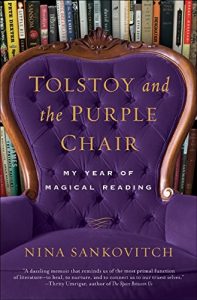 Ms. Sankovitch lost her beloved sister, Ann-Marie, to cancer at age 46. Reading was a lifelong passion for them both. During Ann-Maire’s final months in the hospital, Ms. Sankovitch read aloud to her — spending as much time together as possible during her last days.
Ms. Sankovitch lost her beloved sister, Ann-Marie, to cancer at age 46. Reading was a lifelong passion for them both. During Ann-Maire’s final months in the hospital, Ms. Sankovitch read aloud to her — spending as much time together as possible during her last days.
After her sister’s death and overcome with grief, Nina decides that the same passion that bonded her with her sister and carried her through her life will be her therapy. She will read a book a day for a year.
A book a day, I wondered? Even I, a voracious reader, can’t compete with a book a day. These were her rules:
• She would read only one book per author,
• She would not re-read any books she had already read,
• She would limit her choices to books that were no more than one inch thick, ensuring that they would, for the most part, be in the range of 250-300 pages each,
• And she would only read the kind of books she and her sister, Anne-Marie would have enjoyed together.
For those of us who want to read about what someone else is reading, Tolstoy and the Purple Chair takes us on her journey, as she reads from her favorite purple chair.
She shares her epiphanies and discoveries — all from the pages of her carefully chosen books. She intersperses her bookish insights with memories of her sister and of growing up in a bookish immigrant family who instilled in her the belief that books are not a luxury, but a necessity.
Never fear, this is not a grim tale of a painful year, nor is it an instruction manual for grieving. Ms. Sankovitch gives us a book straight from her heart, full of hope and wisdom. It’s about stopping the merry-go-round of a busy life to read, think and learn.
This book will appeal to any bibliophile, but especially for those of us who turn to books for answers, comfort and wisdom.
 Signed, Sealed, Delivered begins with Ms. Sankovitch’s discovery of an old steamer trunk she finds in her backyard which holds hundred year old letters written by a Princeton freshman, James Seligman, to his mother in the early 1900s.
Signed, Sealed, Delivered begins with Ms. Sankovitch’s discovery of an old steamer trunk she finds in her backyard which holds hundred year old letters written by a Princeton freshman, James Seligman, to his mother in the early 1900s.
These letters are fascinating, as he reports on an explosion in the J.P. Morgan building, comments on Roosevelt’s presidential campaign, and the death of his uncle on the Titanic. His letters are dry and acerbic, but filled with details.
Ms. Sankovitch’s book goes on explore the history of letter writing and we get to read correspondences ranging from the ancient Egyptians, to medieval lovers, to letters exchanged between Samuel Morris Steward, Gertrude Stein and Alice B. Toklas — the latter, some racy and fun reading.
Her section on the letters President Lincoln received after his son’s, Willy’s, death, revealed a rare bit of history. Franklin Pierce and family were in a train crash on their way to Washington DC to take office in 1853. Thrown from the carriage, Pierce and his wife watched helplessly as their son was hit and killed by the still-moving train. Pierce was writing from his own similar experience when he penned his heartfelt condolences to Abraham Lincoln.
Ms. Sankovitch interweaves her own experiences and correspondences with well-researched accounts of other letter writers in history. I love to read other’s correspondence, peeking into their day-to-day lives, hopes, and dreams.
The book is a love story to the lost art of letter writing, a wonderful way to glimpse into history and relationships — all revealed through letters:
“A written letter is a one-of-a-kind document, a moment in time caught on paper, thoughts recorded and sent on, a single message to a special recipient.”
“Sir, more than Kisses, letters mingle souls. For thus, friends absent speak” John Donne, “To Sir Henry Wollow”
Ms. Sankovitch’s own son is heading off to Harvard, and she hopes that he will write to her, as the Princeton student wrote to his mother and as Nina wrote to hers — but she knows she will have to settle for emails or text messages.
“Yes, I am waiting for an answer to my letter but waiting is not my main activity. To be dependent on e-mail and text is to have access to immediate response — but diminishes the rich opportunities that come from living with delayed gratification. For so much happens in the delay.”
This book made me think about future generations. Somehow, I suspect that no one is saving emails and text messages in old trunks. Without letters — from those who made history, shared their love for each other or, just reported on their routine lives — how will we know those long dead?
Luckily I have boxes of old letters, filled with letters from teenage pen-pals, past loves, from Husband, parents, grandfather and those I wrote to my family when I was away at college. Some rainy night – I will revisit those.
Thanks to Simon and Shuster for a an advanced readers copy of Signed, Sealed, Delivered
Sons and Daughters of Ease and Plenty by Ramona Ausubel
Sons and Daughters of Ease and Plenty presented me with a dilemma — the age old struggle of plot versus characters. Can you like one but not the other?
But I’m getting ahead of myself.
The book opens in 1976, with this delightfully written description of Fern, Edgar and their three young children enjoying their summer house on Martha’s Vineyard:
“Summer fattened everybody up. The family buttered without reserve; pie seemed to be everywhere. They awoke and slept and awoke in the summerhouse on the island, ate all their meals on the porch while the sun moved across their sky. They look out at the saltwater cove and watched the sailboats skim and tack across the blue towards the windward beach, littered with the outgrown shells of horseshoe crabs.”
“The children were brown with white, white behinds and they wore anklets of poison ivy blisters. For them the whole point of life was to be wet and dry eight times a day and never clean. There was always sand in the bed and none of them wanted it to end.”
However, at the end this holiday Fern and Edgar discover that their seemingly endless supply of inherited money has run out.
Fern comes from one of the oldest and richest families in Chicago. Her parents are elegant, classy and self assured in their position. Their historic house reflects the worn shabbiness of wealth. Their clothes are old but so well made they last forever. Even their roses reflect this attitude:
“Their rosebushes were so old that some of the branches were a big as ankles and when they bloomed they were just imperfect enough, as if someone had come out at dawn and carefully ruffled them.”
In contrast, Edgar’s family is new money and his mother Mary studies the old money types, attempts to mimic class — redecorating every year and buying only the most current clothes each season:
“If Edgar’s parents could have worn clothes sewn from money itself they would have. Everything they had on was the most expensive version available. Mary wore a silk shift [—-] a mink stole even thought it was summer and yellow heels that had been made for her very feet by an ancient Italian cobbler.”
Ms. Ausubel beautifully weaves this tale set in the 1960’s and 70’s and chocks it full of dark humor, bittersweet ironies, and a string of bizarre vignettes. From Fern and Edgar’s indifferent parents and their lackluster childhoods – we begin to see that wealth – whether old or new – has consequences.
After Fern and Edgar get married they profess to embrace the 1960’s counter culture movement – trying desperately to eschew the wealth that follows them. But after three kids they have settled into enjoying the trappings of their privilege – sailboats, summer houses. When they learn that this accustomed wealth, always safely in the background, is gone — they both fall apart.
“Everything around her — the house, the furniture, the manner of life — was poised to evaporate. She was a soft body trying to prepare herself for the unknown future.”
Fern and Edgar each experience what could be called an extensional crisis. Edgar takes an extended sailboat trip with his mistress, and Fern, learning of the affair, escapes on a cross country road trip with a stranger (a gentle giant of a man- no really, a giant!). In one of the strangest plot twists ever, neither checks with the other and they each take off believing the other is staying home with the children. “Despicable people!” I sputtered out loud as I read these pages (What? Don’t you talk to your book’s characters?).
Their respective journeys are told against the frightening tableau of their young confused children who are afraid of being sent to an orphanage, so pretend everything is normal. The children forge meals from whatever they can find, get dressed, go to school, and play outside as always. No one realizes they are alone. Finally, an astute teacher catches on, and both parents race home. But that’s all I’ll tell you.
I found Sons and Daughters of Ease and Plenty* often dark, sometimes hilarious, but always captivating. A wonderful treatise on the moneyed privileged and the pitfalls of wealth – both for those who have it and those who once did.
Ms. Ausubel can certainty write and has created way (way) out of the ordinary characters — characters who are shallow, brave, mean, immature, wise. While I often despised the characters, they were real and leapt off the page, working their way into my brain. I devoured this book and whenever I wasn’t reading it – I wanted to be.
*I keep wanting to call it Sons and Daughters of Good and Plenty. 
An advanced readers copy was provided by Riverhead books, an imprint of Penguin Random House



